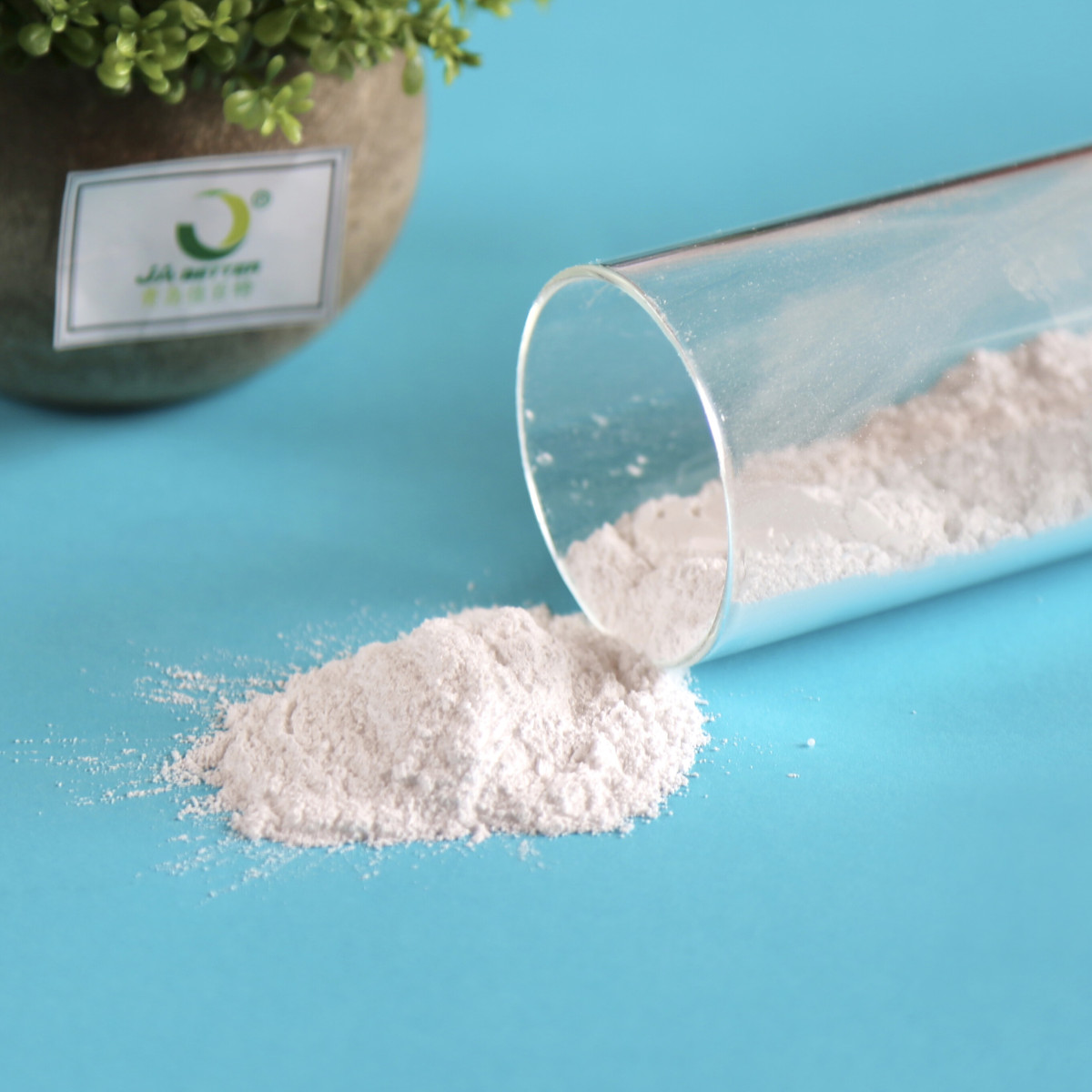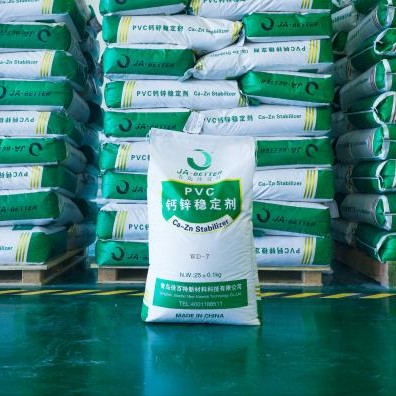Welcome to Qingdao Jabetter New Material Technology Co., Ltd. Official Website!
NEWS
Calcium-zinc stabilizers (CaZn stabilizers) are widely used as an eco-friendly alternative to traditional lead-based stabilizers in the processing of PVC (polyvinyl chloride). The content and ratio of calcium (Ca) and zinc (Zn) in these stabilizers significantly impact their performance, including thermal stability, processing characteristics, gloss, and durability of the final product. Both calcium and zinc play essential roles in improving the thermal stability, mechanical properties, and appearance of PVC products, while ensuring environmental safety.
1. The Role of Calcium in CaZn Stabilizers
Calcium in calcium-zinc stabilizers typically exists in the form of calcium salts (such as calcium chloride, calcium sulfate, or calcium acetate). The key roles of calcium include:
(1) Thermal Stability and Anti-Degradation Effect
Calcium helps neutralize the acidic by-products generated during PVC processing, preventing thermal degradation. It improves the heat stability of PVC, delaying degradation at high temperatures and reducing the deterioration of the material during processing.
(2) Improved Rigidity and Strength
Calcium salts increase the rigidity and mechanical strength of PVC products. For applications requiring high mechanical strength (e.g., pipes, window profiles, etc.), a higher calcium content in the stabilizer enhances the material's resistance to pressure and deformation.
(3) Enhanced Processing Performance
Calcium helps optimize the processing of PVC, especially in extrusion, injection molding, and other manufacturing processes. It can reduce melt viscosity, improving processing efficiency and stability.
(4) Impact on Surface Gloss and Transparency
Higher calcium content may reduce the gloss and transparency of PVC products, especially for clear or translucent applications. Therefore, calcium-based stabilizers are typically used for products where gloss and clarity are less critical.
2. The Role of Zinc in CaZn Stabilizers
Zinc in calcium-zinc stabilizers usually exists in the form of zinc salts (such as zinc chloride, zinc acetate, or zinc stearate). Zinc plays a crucial role in the following areas:
(1) Enhanced Thermal Stability and UV Resistance
Zinc improves the thermal stability of PVC and helps prevent degradation during processing, especially in applications requiring UV resistance. It enhances the material's ability to resist UV radiation, thus improving weatherability and extending product lifespan.
(2) Improved Gloss and Transparency
Zinc contributes to improved surface gloss and transparency in PVC products. For clear or high-gloss applications (such as films, transparent pipes, etc.), higher zinc content helps maintain the material's clarity and aesthetic appeal.
(3) Anti-Aging Performance
Zinc is effective in delaying the aging process of PVC, providing better oxidation resistance and prolonging the material's service life. This is particularly beneficial for outdoor applications or those exposed to harsh environmental conditions.
(4) Improved Processing Flowability
Zinc can reduce the melt viscosity of PVC, enhancing its flowability during processing. This is particularly useful for applications involving complex shapes or intricate molds, as it prevents issues such as blocking or poor mold release.
3. The Effect of Calcium and Zinc Ratio on Stabilizer Performance
The ratio of calcium to zinc in a stabilizer is critical, as it directly influences the overall performance of the stabilizer. An optimized balance of calcium and zinc helps achieve the desired thermal stability, mechanical properties, and appearance of PVC products. The ratio is adjusted based on the specific requirements of the application:
Higher Calcium Ratio: A stabilizer with higher calcium content is often used for applications requiring higher rigidity and thermal stability, such as rigid PVC pipes, window profiles, and construction materials. However, higher calcium content may reduce gloss and transparency.
Higher Zinc Ratio: A stabilizer with higher zinc content is suitable for applications where gloss, transparency, and UV resistance are important, such as clear films, medical products, and food packaging. Zinc enhances the aesthetic properties and weatherability of the product.
Balanced Calcium and Zinc Ratio: For products requiring a balance of mechanical strength, stability, and appearance (e.g., flooring, wall panels, etc.), a well-balanced ratio of calcium and zinc ensures both rigidity and improved surface finish.
4. Common Applications of Calcium-Zinc Stabilizers
Calcium-zinc stabilizers are used in a wide range of PVC applications, particularly in areas where environmental concerns and product performance need to be balanced. Some common applications include:
Rigid PVC Products: Such as water pipes, drainage pipes, and construction materials (window and door profiles). These products require high rigidity, thermal stability, and mechanical strength, making them ideal for stabilizers with a higher calcium content.
Flexible PVC Products: Such as cables, flooring, and hoses. These applications often require better flexibility and transparency, benefiting from stabilizers with a higher zinc content.
Transparent PVC Products: Such as clear films, transparent pipes, and medical packaging. These applications require high aesthetic quality and UV resistance, making stabilizers with higher zinc content more suitable.
Outdoor Exposure Products: Such as garden pipes and building exterior materials, which require UV resistance and weatherability. A higher zinc content is beneficial for these applications, as it enhances the material's durability in outdoor environments.
5. Conclusion
In calcium-zinc stabilizers, both calcium and zinc play distinct but complementary roles:
Calcium: Provides thermal stability, rigidity, and improves processing performance, but may reduce gloss and transparency.
Zinc: Enhances thermal stability, gloss, transparency, UV resistance, and anti-aging properties.
The ratio of calcium to zinc should be carefully selected based on the specific requirements of the application. Higher calcium content is suited for rigid products with higher thermal and mechanical stability, while higher zinc content is ideal for clear, high-gloss, and UV-resistant products. By adjusting the calcium-zinc ratio, manufacturers can achieve an optimal balance between environmental friendliness and performance across a wide range of PVC products.


☁Web:http://www.jbtpvc.com/
☎WhatsApp:008618963029813
✉E-mail: info@Jabetter.com
#PVC_stabilizer#PVC_foaming_agent#PVC_processing_aid#WPC_additive#PVC_lubricant#Chemicals#Chemical_auxiliary_agent#PVC#PVC_additives
#PVC_stabilizer#PVC_foaming_agent#PVC_processing_aid#WPC_additive#PVC_lubricant#Chemicals#Chemical_auxiliary_agent#PVC#PVC_additives
